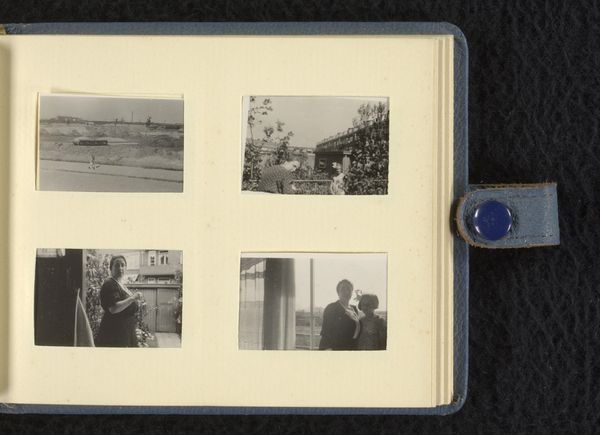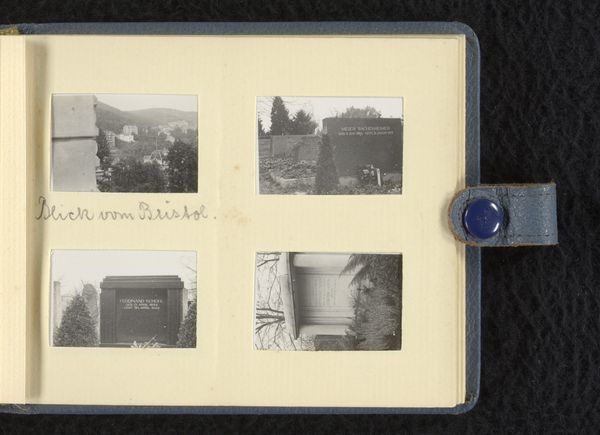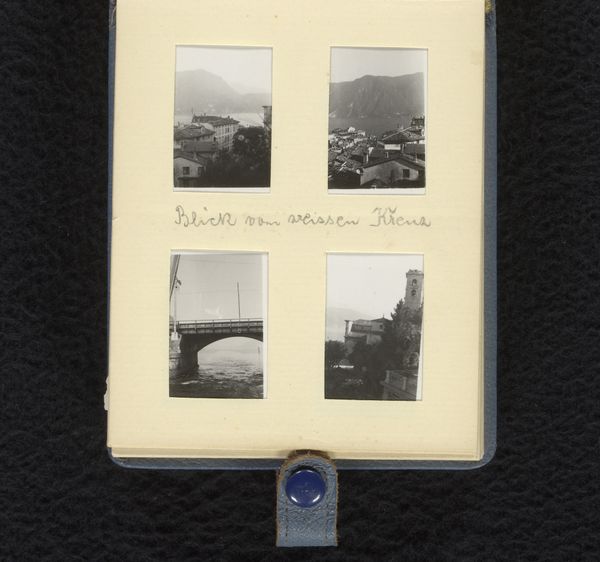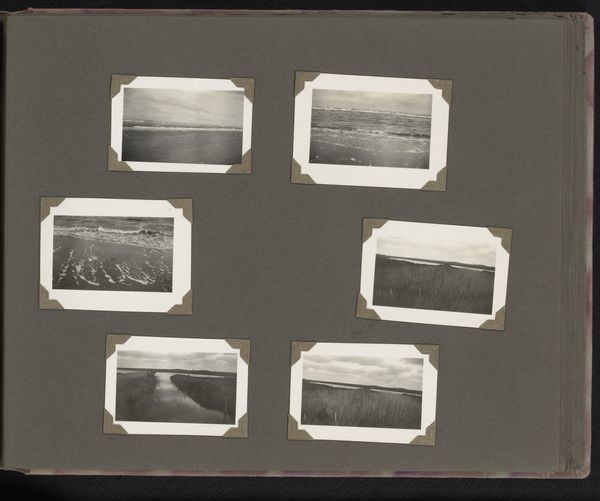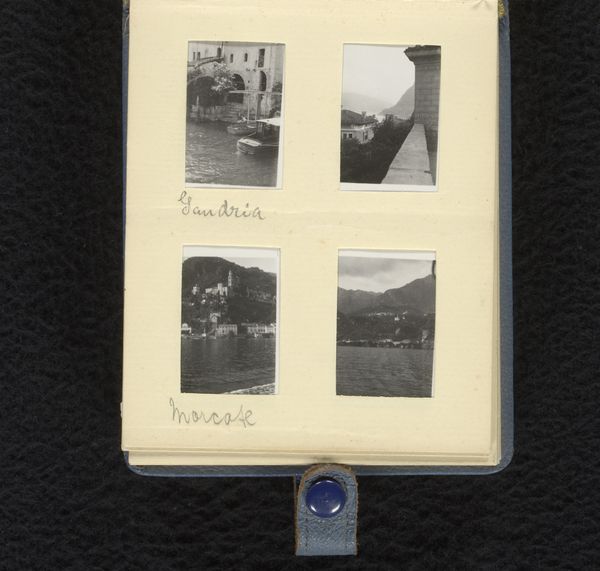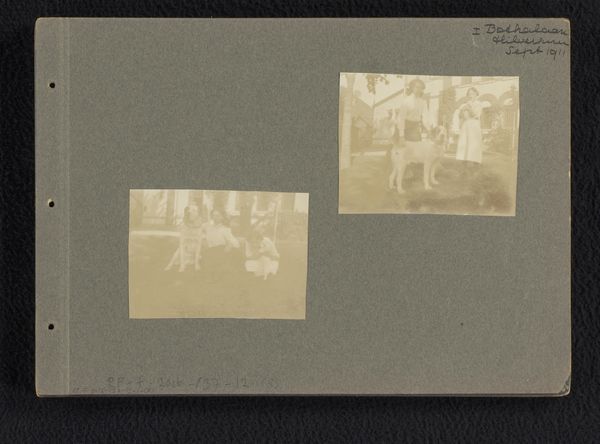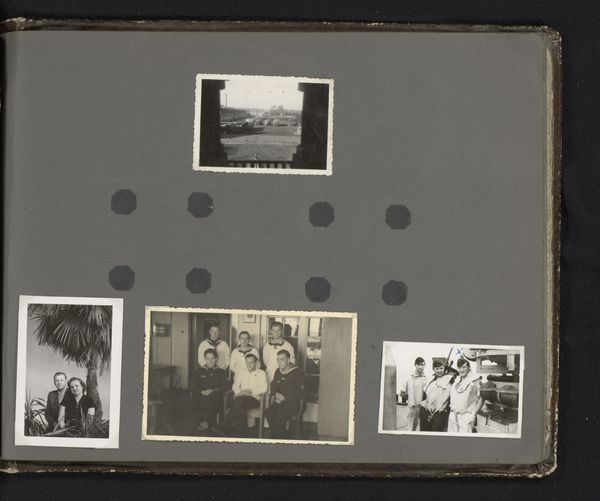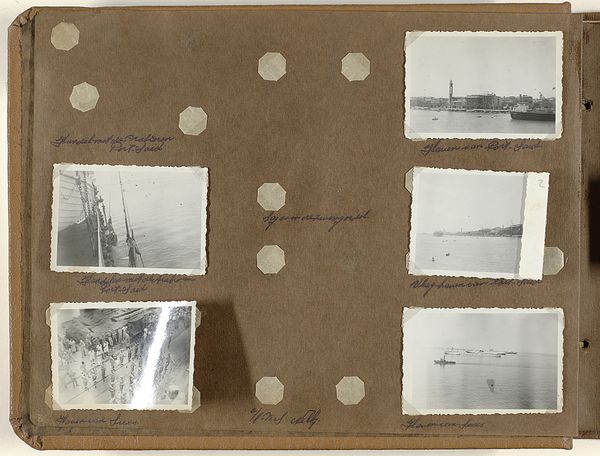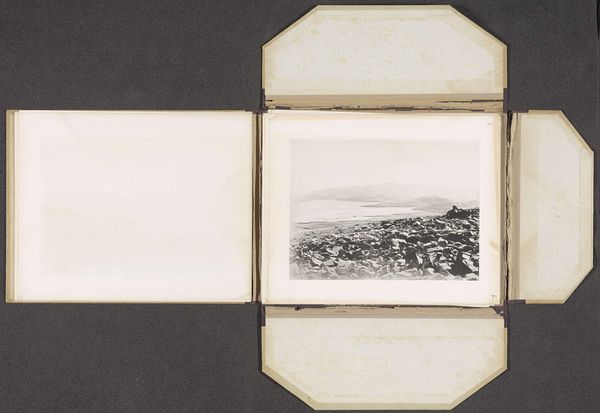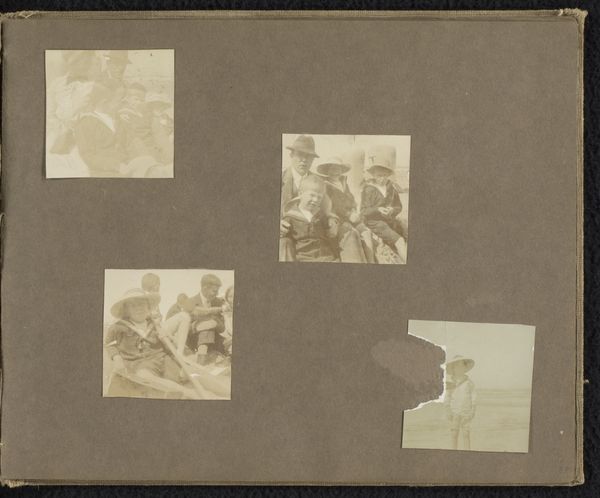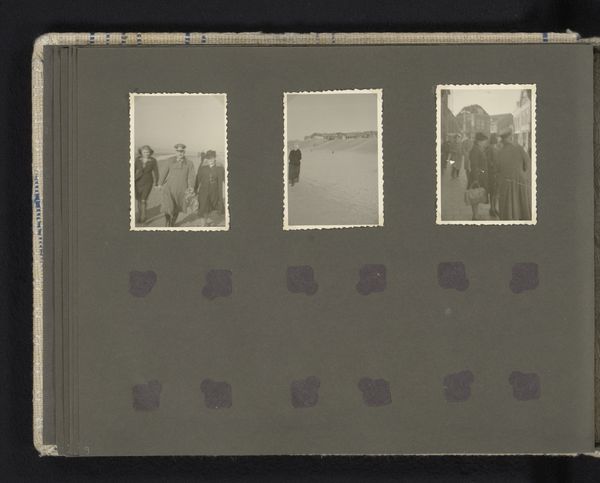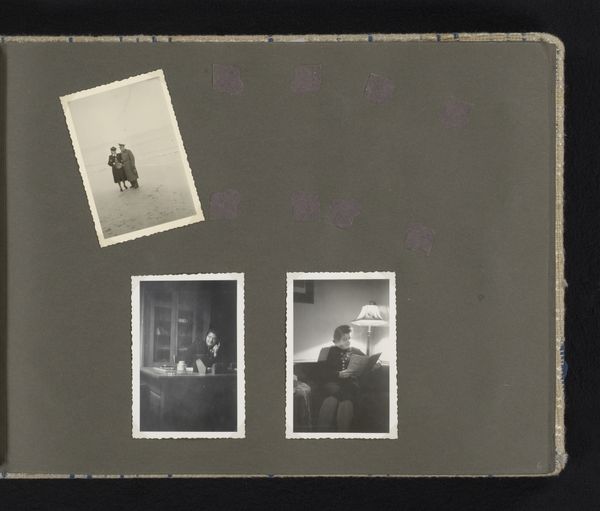
Zeppelin de Hindenburg vliegt over Stuttgart, genomen vanuit der woning van de familie Wachenheimer aan de Hauptmannsreute, mei 1936, Stuttgart 1936
0:00
0:00
photography, gelatin-silver-print
#
landscape
#
photography
#
photojournalism
#
gelatin-silver-print
#
cityscape
#
realism
Dimensions: height 33 mm, width 44 mm, height 85 mm, width 105 mm
Copyright: Rijks Museum: Open Domain
Curator: This striking gelatin-silver print captures the Hindenburg zeppelin flying over Stuttgart, taken from the Wachenheimer family home in May 1936. Editor: It's quite evocative, isn't it? The blimp appears to hang, ominously still, over the very ordinary landscape, with that classic slightly fuzzy photographic texture of the era. Curator: Indeed. The photograph acts as a lens through which we can examine the political and social currents of 1930s Germany. This wasn't just a photo; it's documentation of an event, caught through a family’s perspective. Editor: Precisely! It speaks volumes about the increasing visibility, even normalization, of German military strength within daily life. One wonders about the labor conditions producing the Hindenburg itself, and the societal resources consumed in its manufacture. Curator: Certainly. And to consider further the perspective from which the images were captured: the Wachenheimer family was Jewish. Their vantage point carries layers of complexity—witnessing the rise of German power while their own place in society became increasingly precarious. The home and cityscape provide context to a moment pregnant with tension and the anxiety of things to come. Editor: Yes. Seeing it framed as snapshots within an album also highlights how everyday life was intersecting with larger forces. There is something inherently accessible, humanizing about its raw depiction in gelatin silver, rather than on, say, a high gloss paper more aligned with propaganda. It points to its nature as more of an earnest memory, though charged by association to current and later events. Curator: Absolutely. By understanding the historical context and the means of its production, the work allows us a far richer understanding than simply a striking aerial image might otherwise allow. Editor: I agree entirely. The materials and its style, along with the Wachenheimer’s domestic point of view, frame it less as celebration, more as observation freighted with foreboding.
Comments
No comments
Be the first to comment and join the conversation on the ultimate creative platform.
